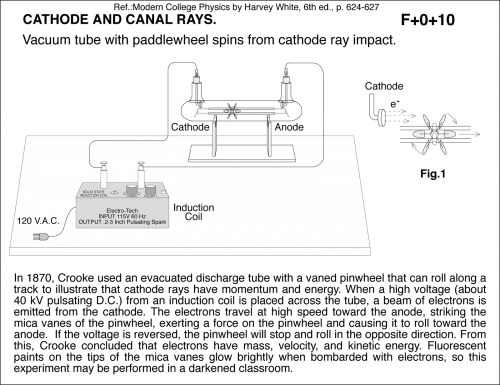Vacuum tube with paddlewheel spins from cathode ray impact.
Primary tabs
Vacuum tube with paddlewheel spins from cathode ray impact. In 1870, Crooke used an evacuated discharge tube with a vaned pinwheel that can roll along a track to illustrate that cathode rays have momentum and energy. When a high voltage (about 40 kV pulsating D.C.) from an induction coil is placed across the tube, a beam of electrons is emitted from the cathode. The electrons travel at high speed toward the anode, striking the mica vanes of the pinwheel, exerting a force on the pinwheel and causing it to roll toward the anode. If the voltage is reversed, the pinwheel will stop and roll in the opposite direction. From this, Crooke concluded that electrons have mass, velocity, and kinetic energy. Fluorescent paints on the tips of the mica vanes glow brightly when bombarded with electrons, so this experiment may be performed in a darkened classroom. Ref.:Modern College Physics by Harvey White, 6th ed., p. 624-627
UCB Index:
F+0+10
PIRA Index:
5M20.20
UCB Taxonomy:
PIRA Taxonomy:
Video:
Popularity:
- Log in to post comments

